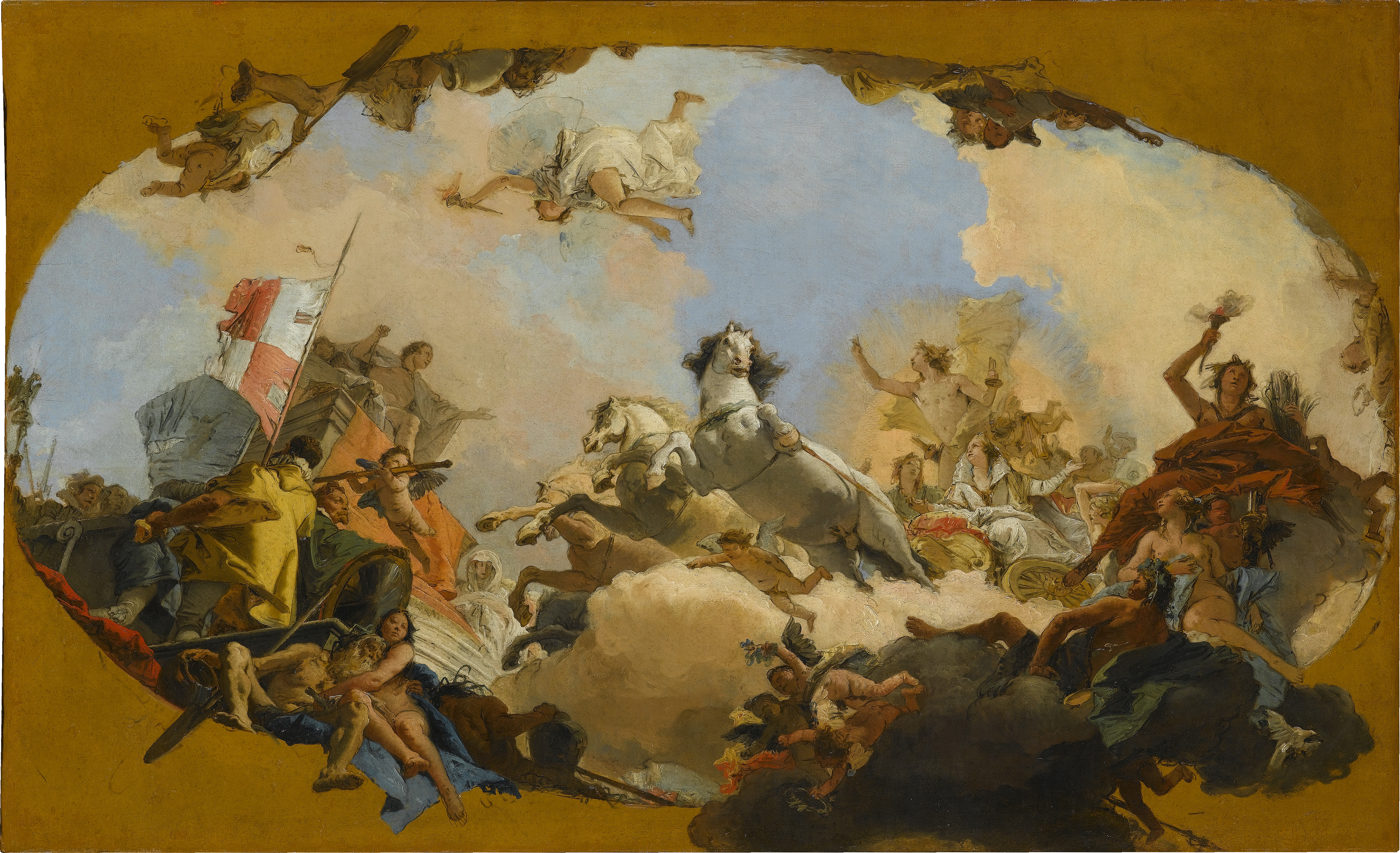
There are several contenders to be Venice’s greatest artist, but a major German art museum is in no doubt about who should take the top spot. The State Gallery in Stuttgart has organized an Old Master show boldly titled “The Best Painter in Venice.” Forget Titian or Veronese, Tiepolo deserves the prize, according to the exhibition’s curators.
Undeniably one of Venice’s art stars, the survey, which features 120 works by Giovanni Battista Tiepolo, opened on Friday, October 11, in the country where the prolific artist flourished in the 18th century.
To mark the 250th anniversary of the Italian artist’s death, curators have gathered together 25 of his best-known paintings as well as 50 drawings, plus etchings, caricature sketches, and nude studies. The blockbuster exhibition features loans from the Accademia in Venice, the Louvre in Paris, New York’s Metropolitan Museum of Art, and the Museum of Fine Arts Budapest.
“In all his splendor, he begins to question the Baroque art system. And he makes use of a subtle joke,” curator Annette Hojer told the German news agency DPA. “The exhibition looks at Tiepolo as a painter at a turning point in the times,” she added. He worked for princes and the church, but he recognized that the system of patronage that had served Western artists for centuries was drawing to a close, she explained.
Born in Venice in 1696, Tiepolo created imaginative and vibrantly-colored frescoes and paintings that made him one of the most in-demand artists of his day. He spent a significant and productive time in the south German city of Würzburg (about two hours from Stuttgart), where he made his largest frescoes. France beckoned, and eventually Spain. He died in Madrid, aged 74, summoned there to undertake several major commissions, including painting ceilings of the Palacio Real.
See works from the exhibition below.
Giovanni Battista Tiepolo’s Rinaldo under the magic spell of Armida. Residenz Würzburg © Bayerische
Schlösserverwaltung.
Giovanni Battista Tiepolo’s Apollo leads the genius Imperii to the Imperial Bride. Staatsgalerie Stuttgart.
Giovanni Battista Tiepolo’s Apollo and Daphne, (ca. 1743/45). Paris, Musée du Louvre, © bpk | RMN – Grand Palais/Franck Raux.
Giovanni Battista Tiepolo’s Caricature of a sitting, of the grown man (on the night stool?). National Museums in Berlin, Kupferstichkabinett © bpk / Kupferstichkabinett, SMB / Jörg P. Anders.
Giovanni Battista Tiepolo’s Rinaldo under the magic spell of Armida. Residenz Würzburg © Bayerische
Schlösserverwaltung.